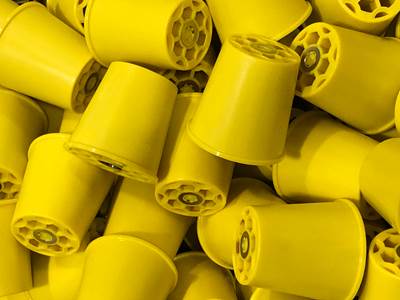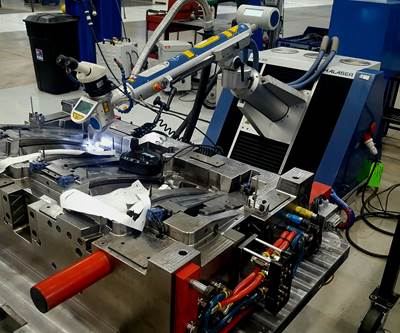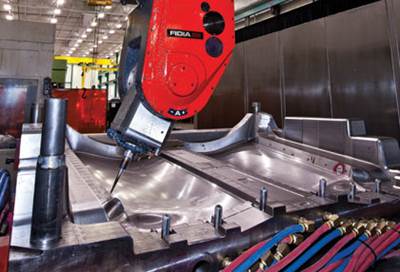How to Improve the Flow of Mold Repair and Engineering Changes
A new perspective on competition, training and workflow redefines this shop’s core competency in repair and engineering changes, and charges the team toward continuous improvement.
Everyone talks about training, but what about “rhinoceros training”? “Go after a rhinoceros-size goal: one equal to your potential and do not underestimate yourself.”
That’s exactly what Scott Phipps, owner of United Tool and Mold (UTM) did back in 1995. The first step to rhinoceros training is to grab a sheet of paper and write in capital letters:
“I AM A RHINOCEROS! I HAVE A DAMN-THE-TORPEDOES SPIRIT! I AM FULL OF ENERGY, AND I CAN’T WAIT TO GET UP IN THE MORNING AND START CHARGING!”
It is this exact attitude that pushes Phipps to wake up every morning with the answers to the torpedoes from the previous day, polish his horn and head into the mold jungle to eagerly tackle the obstacles of the day ahead. He has learned the hard way that the world will always have obstacles that force you to change, but if you charge ahead with audacity and learn from your past torpedoes, you will begin to more easily navigate the future. “It takes an eyes-wide-open approach to life and two-inch-thick skin to survive this mold jungle. That’s rhinoceros training,” Phipps says.
“It takes an eyes-wide-open approach to life and two-inch-thick skin to survive this mold jungle. That’s rhinoceros training.”
The second step is to write a sentence announcing the fact that you have reached whatever goal you are after and the date you want it to be a reality.” Phipps wrote, “UTM will be the customer’s partner and will handle any size mold with no limits and no boundaries by January 1, 2000.”
Although today Phipps considers that Rhino goal accomplished, he knows that he must keep his eyes wide open and remain eager to continually charge. He lives a “never be satisfied” lifestyle and continually sets goals. “Plan your work. Work your plan. Then as you start to reach a goal, set another goal,” Phipps says. “It’s a process. You have to think differently from the norm to be truly successful. You have to stand out and be confident with purpose.”
This training approach has pushed Phipps through tough times. It changed how he approaches life, which not only includes attitude but spirituality, finances and family too. Rhinoism is not only his philosophy but the company’s philosophy as well. Today, Phipps is charging toward a new goal. It’s a never-ending journey of continuous improvement.
Charging Ahead
Phipps came across the concept of rhinoceros training in a very simple book by Scott Alexander called, “Rhinoceros Success,” which has become the rule book for this South Carolina-based mold repair and engineering changes services provider. Rhino reminders adorn the walls of each facility, setting the tone for the attitude of this shop. A mentality that charges these problem-solvers forward to improve every day.
Today, UTM employs 80 people with an average age of 38 across two facilities — one in Rainbow City, Alabama and its newest building in Liberty, South Carolina. Phipps credits the Rhino philosophy for helping him, and his team overcome a myriad of challenges and capitalize on all the growth opportunities.
Earlier time spent (1998-2001) in Japan, England, Korea and China prepared Phipps for this next step in the company’s growth. It changed how he looked at competition, training and workflow. He witnessed how shops worked together to learn, get better and compete in the global market.
Then by 2003, Phipps chose to focus exclusively on repair and engineering services because he saw what was happening in the global manufacturing market and couldn’t compete or spend the money to invest in the necessary capital for the traditional moldmaking model.
UTM is a service provider, not a tool shop. The team takes care of the maintenance side of things and does what it needs to (for anything that forms a part like blow molds or injection molds) to keep manufacturing up and running.
“We were the first shop to focus 100 percent on mold repair and engineering changes, and from 2007 to 2011 when the economy was low, our business was really high. In that time frame, we added onto our Duncan, South Carolina building, increased our mold handling capacity to 50-metric-ton molds (120K lbs) and added multiple locations to provide our services globally,” Phipps says.
By 2010, many shops disappeared, but UTM was thriving. UTM was on top of its game, but Phipps recalls how complacency seeped in just when the market started to change. In 2012-2013 mold, shops started to manufacture molds instead of building molds. They were picking up the European way of manufacturing, including new processes, technology and equipment investment. UTM was not one of those shops.
Phipps’ team was doing the same things within the same facilities and was relying only on tribal knowledge, which saw the company’s sales and market position start to flatten. Mergers and acquisitions were also picking up throughout the marketplace. It was then that Phipps decided to make some business changes.
“We were the first shop to focus 100 percent on mold repair and engineering changes, and from 2007 to 2011 when the economy was low, our business was really high.”
UTM is a service provider, not a tool shop. The team takes care of the maintenance side of things and does what it needs to (for anything that forms a part like blow molds or injection molds) to keep manufacturing up and running.
Go with the Flow
Phipps made a conscious decision to commit to his people and combine two of the companies under one roof with a new facility in a new location. “It's the first time in my life I was able to make a building the way I want it. I did not cut any corners. I did things I never thought I would do. It’s all part of our growth,” Phipps says.
The goal was to be like a Google facility and change the whole image of toolmaking to bring the next generation in and to reset the bar for UTM being the leader in repair and engineering changes again.
The new Liberty, South Carolina facility is about making sure the people understand how the work is going to flow. The 60,000-square-foot facility has 14 cranes up to 50 tons, and a workflow where the dirty stuff comes in one side and the clean stuff goes out the other side, with a command center in the middle where the toolmakers, programmers and purchasing sit. It is essentially “the hub” from which work feeds. Once work leaves the front office and enters engineering, it stays in that room until it goes out the back door. The team is trying to keep work from moving backwards. It’s all about flow.
Phipps put the purchasing department in the hub, too, because UTM is a repair and engineering house, and the team can't plan everything that is going to break or how fast a customer needs it. “The hub is intentionally centralized, open, and accessible to everyone to ensure the efficiency of the workflow,” Phipps says.
He also placed the coordinate measuring machine near the hub as work travels through and comes off the CNCs, as well as tool and component vending machines to help control inventory. “It’s not the cost of the ejector pin, it’s the cost of the labor and waiting. We are firefighters who need access to the tools, so we can get started on a job and get it done,” Phipps says.
Technology is, of course, essential, but Phipps’ investment strategy for the new facility is to “spend money on what we have to have for the size work we do: spotting presses and eye bolts, for example.” Key technology and equipment include SXKH spotting presses, a linear five-axis machining center, a fluidized bed for mold component and hot runner cleaning, laser engravers, laser welders, laser scanners, PowerApps for job tracking, ERP, VISI CAD/CAM and workstations uniformly equipped with hoses, eyebolts, reels, iPads and flatscreens showing job status.
A 3D model of the new facility was key to building it right. “If we didn’t use the 3D model we would have made mistakes,” Phipps notes. “For example, the way we positioned our big five-axis machine would not have allowed the crane to get to it.”
Even the color scheme was purposeful. Phipps chose a cheerful yellow-gold for office and European blue walls in shop part way up throughout the building. I can’t forget the state-of-the-art kitchen, outside porch area with grills, tables, umbrellas and cornhole, not to mention the nice restroom perk for the women of UTM.
The new facility has changed a lot of things. “I would never have imagined that a new facility would attract customers as it has. It's become a marketing piece. They want to come here and be a part of it. They want to support it. And the employees have pride in it, which attracts other young employees and so on. It’s been overwhelming. Even BMW wants to hold its meetings at the new building,” Phipps says.
Rhinoism is not only his philosophy but the company’s philosophy as well. Today, Phipps is charging toward a new goal. It’s a never-ending journey of continuous improvement.
The purchasing department is in the hub too because UTM is a repair and engineering house, and the team can't plan everything that is going to break or how fast a customer needs it. The hub is intentionally centralized, open, and accessible to everyone to ensure the efficiency of the workflow.
People Impact
Phipps did not just set out to transform workflow with a new facility; he set out to transform tribal knowledge into a process by improving the flow of information (data) and work (repair and ECs). This entailed resetting the bar for his people with a “3 Hours, 3 Days, 3 Weeks Rule.” From the time a mold hits the floor, it must be in process within three hours; then within three days, a crashed mold must be fixed; if it’s an engineering change, it must be in process. “Within three weeks, the job is complete,” Phipps says.
Although the new facility’s ease of loading and unloading and speed of logistics is key to this rule, splitting the team into an engineering group and repair group is also vital to the new workflow. Molds come in for engineering changes or repairs, so the shop floor is separated into two areas. Trucks come through and unload the dirty work to the back on one side. That’s the three hours. Once it is there, the work should be in the unload area no more than three hours. Then within three days, it should be in process (being worked on).
UTM manages this flow by flexing its muscle with three 10-hours shifts: 6 am, floaters/project managers at 7 am; noon shift, then the weekend shift. They also pull resources from other facilities, if necessary.
In addition to bringing work in, UTM offers service on-site. For that value-add, Phipps emphasizes the importance of mechatronics to handle hydraulics and electronics when it comes to the service side of mold building. “So, we grab talent from the mechatronics class at the career center. We are developing service-oriented tool guys. They are not becoming journeyman toolmakers,” Phipps says. “Toolmakers can build molds to the numbers. We make molds work.”
“I finally understand what I'm doing after a lot over the years when I didn't know what I was doing. So now it's my job to try to understand what I did and help others and teach them, especially my people and help them reach higher.”
Phipps says he’ll know if what they have established in Liberty is successful if it's sustainable. His goal for the next five years is to train up the next generation to take it over and keep it going someday. He wants to help them to manage it and take it to the next level.
Keep on charging!
Related Content
Making Quick and Easy Kaizen Work for Your Shop
Within each person is unlimited creative potential to improve shop operations.
Read MoreWhat You Should Consider When Purchasing Modified P20 Steel
When buying P20 steels that have been modified, moldmakers must be aware of the variations and key issues that affect delivery, cost and lead times.
Read MoreThe Ins and Outs of Hot Runner Temperature Control
A training checklist that explains the why and how of proper hot runner temperature control and system management.
Read MoreMaintaining a Wire EDM Machine
To achieve the ultimate capability and level of productivity from your wire EDM on a consistent, repeatable and reliable basis, regular maintenance is a required task.
Read MoreRead Next
When It Comes to Shop Safety, Think Beyond Pallets and Blocks
More often than not when touring a shop I see a unique approach to solving an everyday problem. This time it was a shop full of big, heavy molds that were not sitting on pallets or blocks across the the floor. Instead, they were sitting on top of small, plastic feet.
Read MoreLaser Welder Delivers Big on Time and Cost Savings for Small Repairs
Laser welder’s ergonomic design and functionality makes small repairs faster and easier for United Tool and Mold Inc.
Read More2011 Leadtime Leader Awards: Large Shop Winner
United Tool & Mold, Inc.: Charging Forward with Unique Mold Repair Niche.
Read More

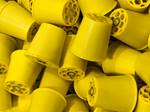

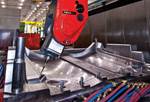







.jpg;maxWidth=300;quality=90)







